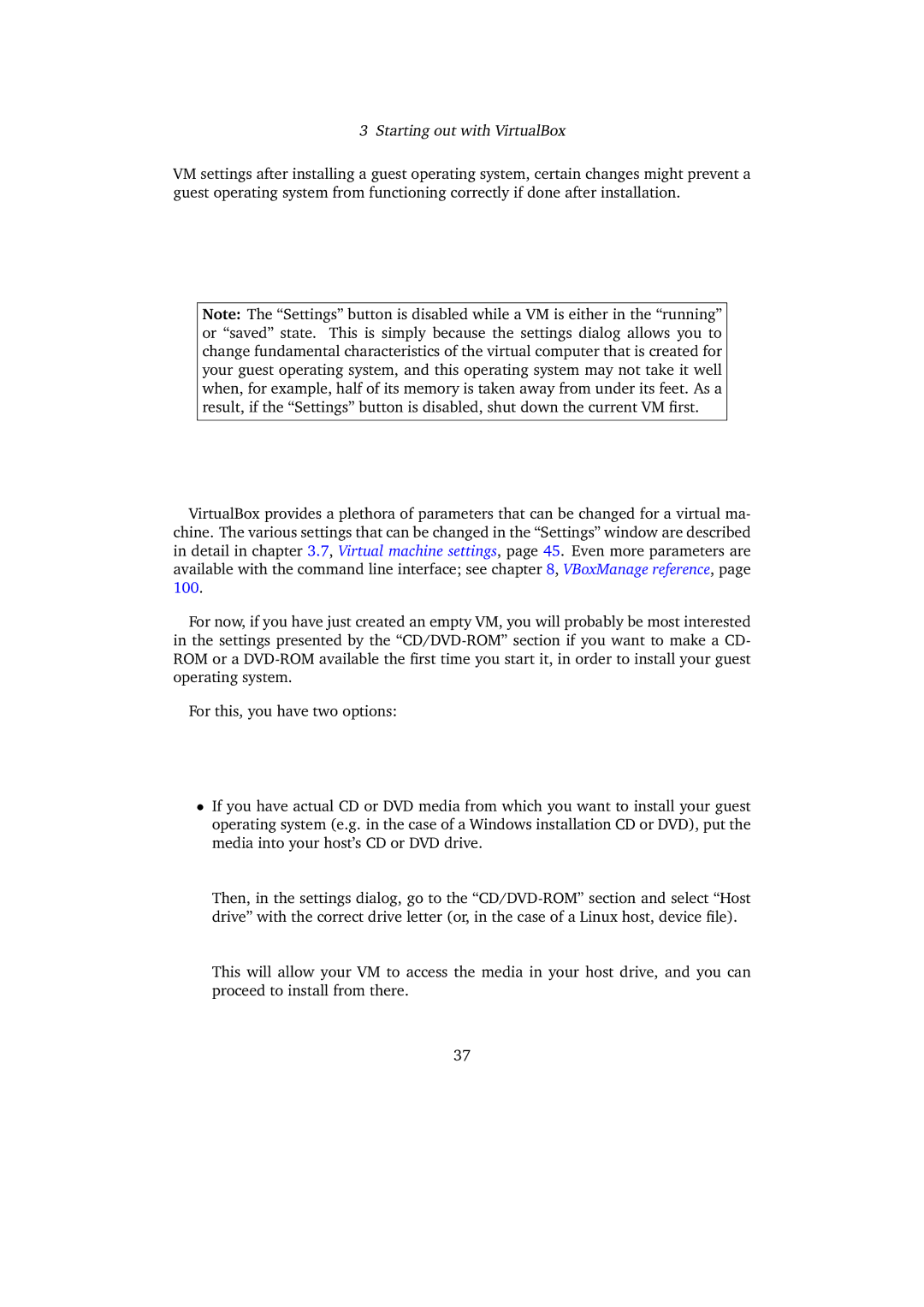
3 Starting out with VirtualBox
VM settings after installing a guest operating system, certain changes might prevent a guest operating system from functioning correctly if done after installation.
Note: The “Settings” button is disabled while a VM is either in the “running” or “saved” state. This is simply because the settings dialog allows you to change fundamental characteristics of the virtual computer that is created for your guest operating system, and this operating system may not take it well when, for example, half of its memory is taken away from under its feet. As a result, if the “Settings” button is disabled, shut down the current VM first.
VirtualBox provides a plethora of parameters that can be changed for a virtual ma- chine. The various settings that can be changed in the “Settings” window are described in detail in chapter 3.7, Virtual machine settings, page 45. Even more parameters are available with the command line interface; see chapter 8, VBoxManage reference, page 100.
For now, if you have just created an empty VM, you will probably be most interested in the settings presented by the
For this, you have two options:
•If you have actual CD or DVD media from which you want to install your guest operating system (e.g. in the case of a Windows installation CD or DVD), put the media into your host’s CD or DVD drive.
Then, in the settings dialog, go to the
This will allow your VM to access the media in your host drive, and you can proceed to install from there.
37
